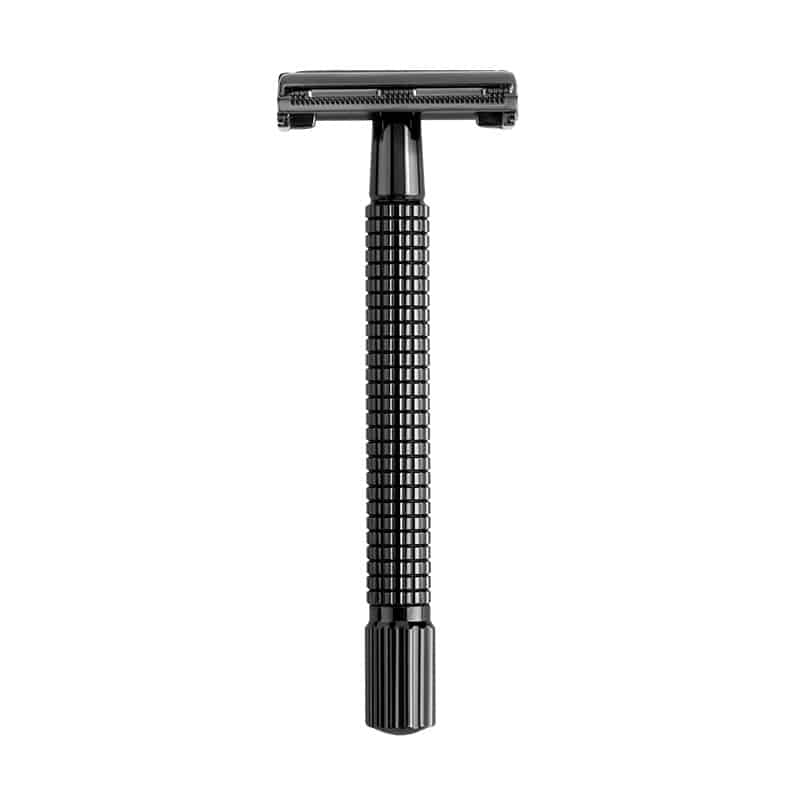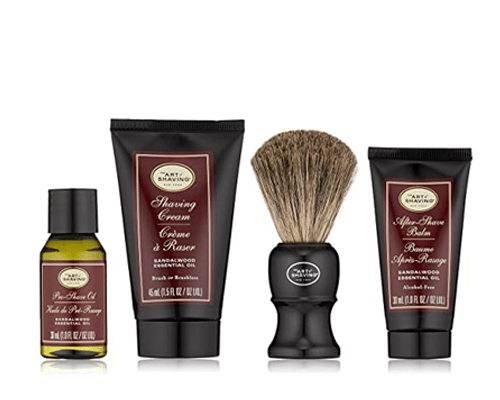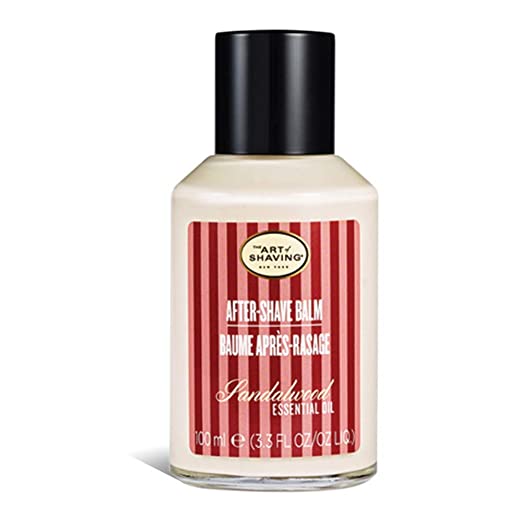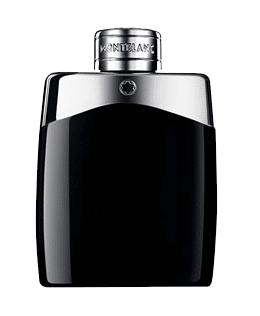Post Content
Post Content
How to Sharpen a Straight Razor: A Guide to Ultimate Manliness
There is no more rugged or manly method than using a straight razor when it comes to shaving.
On the other hand, there’s also no more dangerous method of shaving (shaving with a knife), as they call them cut-throat razors for nothing.
Shaving with a straight razor (or barber knife) is basically the equivalent of using a super sharp knife to slice off your facial hair.
Still, that shouldn’t scare you away, as learning how to use a cut-throat razor (I mean learning how to use a straight razor) is actually quite easy.
Again, with a little practice and patience, there’s a very slim chance you will ever cut yourself any worse than you would with any other razor.
However, the key to it all is time, as using the best beginner straight razor will definitely add at least a few more minutes to your daily routine.
That being said, it can also give you one of the smoothest, closest, and most pain-free shaves you’ve ever experienced.
While many of the major razor brands continue to push the envelope, adding more and more blades to their disposable cartridge razors, the truth is that using a single sharp blade is the key to a shave with less irritation.
Basically, the fewer times a razor blade touches your face, the better.
While multiple blades may be able to give you a close shave in less time, they also tend to cause much more irritation than a single-blade razor.
Most Popular Products |
||
|---|---|---|
| "#1 Butterfly Safety Razor" | "Best Shaving Kit" | "Top After-Shave Balm" |
 |  |  |
| View on Sigma | View on Amazon | View on Amazon |
So, if you’re ready to take your shaving to the next level, a straight razor is the only way to go. (Correction, you can also go with a safety razor as well and get a fine single-blade quality shave).
If I scared you away from the straight razor, be sure to check out my list of the best safety razors and benefits of shaving with a safety razor to see if this may be more of the direction you want to take your shaving routine).
However, before you can learn to straight shave like a pro, it’s necessary to understand how to sharpen a straight razor and what all goes into using these potential killing machines.
We all know about the importance of using a sharp razor, but nowhere is this more important than when using a straight razor.
Going back to the knife analogy, you probably wouldn’t use a dull or rusty knife for any important tasks, just as you should never bring a dull or rusty razor blade anywhere near your face.
As we said, shaving with a straight razor takes more time, not just because you need to be more patient and careful when actually shaving, but also because you need to ensure that the razor is fully sharp prior to each shave.
In fact, learning how to sharpen a straight razor is equally as important as learning the proper shaving technique, as using a straight razor that hasn’t been properly honed and sharpened is a surefire path to a painful, bloody shave.
![How to Sharpen A Straight Razor in [year] (A Complete Guide) 1 How to Sharpen A Straight Razor](https://www.primandprep.com/wp-content/uploads/2015/04/sharpen-straight-razor.jpg)
The Basics of Straight Razor Maintenance
Before we get into the ins and outs of how to sharpen a straight razor, it’s first important to discuss a few basic tips for caring for your straight razor.
As you’re probably aware, a high-quality straight razor is definitely not cheap, so it’s important you properly take care of it to get the most life out of it.
In truth, a high-quality straight razor could last you a lifetime with proper care and maintenance.
However, without it, you’ll probably end up needing to spend an arm and a leg on specialist sharpenings.
If you’ve got a stainless steel razor, caring for it is quite simple, as the stainless steel ensures the blade won’t rust if it’s put away wet (although it should never be).
On the other hand, non-stainless blades require a bit more care and maintenance to keep them working their best.
The biggest key here is to thoroughly rinse and dry the razor off after each use.
While stainless straight razors may not rust, it’s still a good idea to follow this step even with them, as it will help increase the life of the blade.
So, no matter what type of blade you’re using, make sure to always fully dry it off and never put it away when it’s still damp.
Due to the extra time, it takes to shave with a straight razor, many men only use this method when learning how to sharpen a straight razor.
If you’re using your straight razor routinely, you’ll be fine with simply cleaning it off and stropping it before each use.
However, if you think it may be more than a few days until you’ll use the razor again, then it’s a good idea to rub it down with light oil after you’ve rinsed and dried it off.
Using oil will help ensure the edge remains sharper, meaning it will cut down on the amount of time you have to spend stropping or honing the blade.
While we’re discussing the time when learning how to sharpen a straight razor, another important thing to know is that you’ll need to wait at least 24 to 48 hours in between using your straight razor.
This is because the edge of the blade actually grows a small amount as it’s used.
The cutting edge will eventually return to normal, but this takes some time, which is why you’ll need to wait a day or two before using the razor again.
As the cutting edge grows, it also becomes slightly thinner.
Over time, the metal will return back to its normal state.
However, if you strop the blade before it’s fully returned to normal, there’s a very good chance that the thinner edge may break off, thus damaging the blade and ruining the strop.
If this happens, you’ll be left with no option but to spend some serious time honing or pay someone some serious cash to re-establish and resharpens razor blades cutting fin.
A Quick Note on Purchasing a Straight Razor
Since you’re reading this article on how to sharpen a straight razor, we can assume that you’re not a straight razor pro, so before we get into the basics of stropping and honing your blade, we’ll quickly discuss one important aspect of purchasing a straight razor.
For beginners, it’s always best to buy a pre-honed, shave-ready straight razor.
While there are many non-shave ready razors on the market, these are really only meant for those exacting men who prefer to hone and bevel the cutting edge on their own.
By buying a shave-ready razor, you can spend the first few months focusing on learning how to properly shave with and care for your razor before having to get into the more complicated task of honing the blade.
If you’re in the market for a quality straight razor be sure to check out our tried and true list of the best straight razors.
When buying your straight razor, you’ll also need to purchase a leather strop that can help you learn how to sharpen a straight razor.
However, the type of strop you’ll need depends on the type of razor you buy.
Generally speaking, a flat blade razor needs a suspended strop, while 1/1 or 1/2 concave blades should be used with a hanging strop.
Make sure to read the manufacturer’s instructions closely, as they will typically state which type of strop needs to be used.
Using the wrong type of strop for your safety razor can quickly ruin the edge and will most likely require you to take the blade in for specialist sharpening to make the cutting edge useable again.
When buying a strop, we recommend purchasing one with leather on one side and canvas on the other.
This type of strop makes the process a bit easier, as the canvas side of the strop is perfect for pre-sharpening the blade and helps to cut down on the number of passes you’ll need to make on the leather side.
How to Sharpen a Straight Razor: Stropping vs Honing
If you own a straight razor sharpening kit, then you should probably know how to sharpen a straight razor using a razor blade sharpener.
When it comes to caring for your straight razor, there are actually two separate steps: stropping and honing.
Razor strop is the more basic method of maintaining the edge on the blade while honing is more about sharpening and refining the edge with a razor sharpener.
Generally speaking, although some men insist on stropping their blade immediately before each use, in most cases straight razor stropping is only necessary after every five to ten shaves.
On the other hand, honing (usually done with a straight razor honing stone) is something that only needs to be done every few months or even once a year, depending on how thick your facial hair is and how often you use the razor.
How to Strop a Straight Razor
If you’ve ever seen or experienced a straight razor shave, you’ve probably seen the barber running the blade over a leather strap before using it – that is how to use a strop.
This important practice is known as stropping or sharpening strop and is used to polish and refine the cutting edge before each use.
The actual method of stropping is basically the same no matter whether you’re using a hanging or suspended strop.
How to make a strop?
To strop the blade, place the back of the blade at a flat angle on the strop and then draw it along the strop away from the body and away from the cutting edge.
Then, turn the blade over on its back and draw it back along the strop towards yourself.
The most important aspect of how to sharpen a straight razor is turning the blade over, as drawing it back towards yourself without turning the blade over can quickly result in the cutting edge becoming rounded and losing its sharpness.
This will again probably require specialist sharpening or some serious time spent honing to repair the damage done.
When dragging the blade across the strop, make sure to use no more pressure than the weight of the blade and ensure that the entire cutting edge is in contact with the leather throughout the stroke.
Also, if you’re using a hanging strop to learn how to sharpen a straight razor, make sure to keep tension on the strop, as letting it hang loose will cause the blade to become rounded and lose its cutting edge.
If you’re using a strop with canvas on one side, first take a few passes over the canvas side in the same manner, before then moving on to the leather side for the final passes.
Depending on how sharp the blade was, to begin with, it may take a few passes, or it could take many more (up to 60 passes or more) if the blade was quite dull.
For this reason, it’s important to test the sharpness of your blade before stropping.
This will not only tell you how much stropping is needed but also give you a good idea if it’s time for a complete honing when the blade starts getting too dull.
Another important thing to remember when learning how to sharpen a straight razor is that stropping should only ever be done prior to shaving.
Stropping the blade after shaving could cause small pieces of metal to break off and get stuck in the strop, which effectively ruins the strop as it basically turns it into sandpaper and can quickly ruin your blade.
- Get one of the best strops here on Amazon
- Don’t just take our word for it, check out all the other glowing user reviews here.
Testing the Sharpness of Your Straight Razor
Experienced straight razor shavers know that the cutting edge, known as the fin, actually begins to grow during the shave.
Straight razor sharpening is a basic practice for most barbers and straight razor owners.
This is because the metal begins to develop a small bur that extends the cutting edge, which can easily be seen by examining the blade under a microscope before and after the shave.
Although the burr causes the edge to grow, it will slowly return back to its normal state after the shave.
Nonetheless, over time the burr begins to be worn away and the cutting edge begins to become more rounded.
When this happens, the blade will need to be honed, as no amount of stropping will re-establish the fin.
However, knowing when a stropping is sufficient or when a full honing is needed requires being able to accurately test the sharpness of the blade.
How to Hone a Straight Razor
When it comes to honing, there are a number of different methods that can be used, depending on how dull the blade is.
For basic honing, it’s often enough to use a strop with a small amount of red honing abrasive paste or chromium oxide on it, followed by a separate strop with black polishing paste.
However, for more serious honing, you’ll probably need to invest in at least two high-quality hones.
Depending on how picky you are, you could invest in a whole set of honing stones, but in most cases, all you’ll really need is a #1000 – 5000 and #8000 – 12000 grit hones.
The #1000 grit hone is what you’ll use for crafting the cutting fine, while the #8000 is used for applying the finishing touches and polishing up the edge.
Recommended stones:
Although there are numerous methods of honing, we have found that the X-pattern seems to work the best.
Keeping the blade flat, drag the razor across the hone towards the cutting edge.
Begin with the bottom of the blade near the top of the hone, then drag it diagonally down and across the stone.
Once you reach the end, pull the blade back up so the bottom of the blade is flush with the bottom of the hone, then turn the blade over and repeat.
Always start with the coarsest hone (in our case, the #1000 grit), before eventually moving to the finer grade hones for the finishing touches.
No matter what grit of hone you’re using, make sure to take slow, even strokes without applying too much pressure.
Although extra pressure may help take off more metal, it also increases the chances of you screwing up the bevel and having to start over.
If you’ve never honed a straight razor before, let me tell you, there is nothing more annoying than getting in a hurry and messing up the final polishing, forcing you to start all over.
So, make sure to take your time to learn how to sharpen a straight razor and continually check the sharpness of your blade for the best results.
The heavier grit stones are used to develop the bevel on the blade.
Depending on how dull the blade is, it may take a few passes on the #1000 gritstone before you can move on to the finer polishing stones.
However, having an over-honed blade is almost as bad as a dull blade, so it’s usually best to take one or two passes on the #1000, followed by 5 or 10 passes on the #8000.
Only then can you test the blade to see how much additional honing is needed.
Still, even when you feel the blade is shaving ready, it’s always a good idea to take another 5 to 10 passes over the polishing stone just to be sure.
After honing the blade on the stone, the next step is to then strop the blade as you normally would, and then finally the blade should be ready for shaving.
Just make sure to fully rinse and dry the blade off in between honing and stropping, otherwise, you could again end up with metal shavings stuck in the strop.
As you can probably see by now, shaving with a straight razor definitely requires a bit more time and patience than other methods and this is one of the reasons why you need to learn how to sharpen a straight razor.
Top Rated Colognes by Women |
||
|---|---|---|
| "Montblanc Legend" | "Ck One" | "Nick Jonas by John Varvatos " |
 |  |  |
| Buy on Amazon | Buy on Amazon | Buy on Amazon |
However, it can also be incredibly rewarding, and it really isn’t as difficult as it first seems.
While it will definitely take you some time to learn how to sharpen a straight razor, you’ll quickly be able to cut down on the amount of time it takes as you become more comfortable with using, stropping, and honing your blade.
The key to it all is to be patient and take your time, as rushing the process will never produce good results.
In truth, using a straight razor isn’t for everyone and there is no way you’ll become a pro at it overnight.
However, that being said, it’s also not rocket science and no other method will make you feel like such a man.
So, why not invest in a quality straight razor and learn how to sharpen a straight razor then see how much of a difference it can make for you.
Also, check out our infographic on straight razors vs safety razors.
Hey! Don’t Leave Yet!
If you found this article on how to sharpen a straight razor helpful please be so kind as to share it on Facebook or other social media per the buttons below.
We really would appreciate it as we have worked so hard on this post for you.
I have a feeling some of your friends and family will find it helpful as well.
Also, be sure to join the Prim&Prep community!
Not only will you have a chance to WIN your choice of a quality safety razor or beard oil but we will provide you with all kinds of helpful and enlightening male grooming tips and advice directly to your inbox so you don’t have to waste your time fiddling on the web to find the right information to look and feel your best.
There is nothing to lose and so much to gain.
SIMPLY SUBSCRIBE BELOW!

Thanks for this guide! It’s really a great and helpful piece of information. I am satisfied that you simply shared this helpful info with us .There’s so much information and varying opinions out there, thanks for presenting the facts and helping me to get a clear understanding of what I should be thinking about and considering for my Sharpen a Straight Razor.Thanks again and keep up the good work.